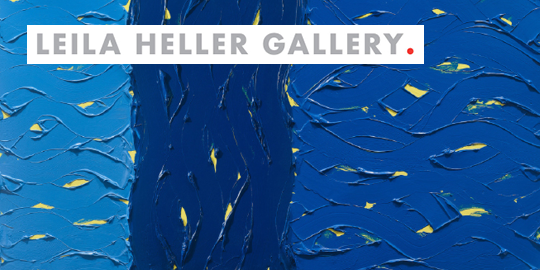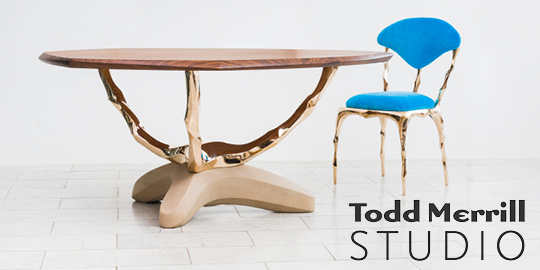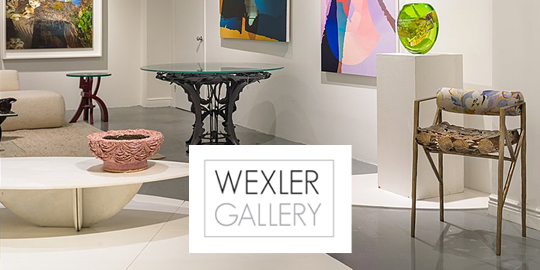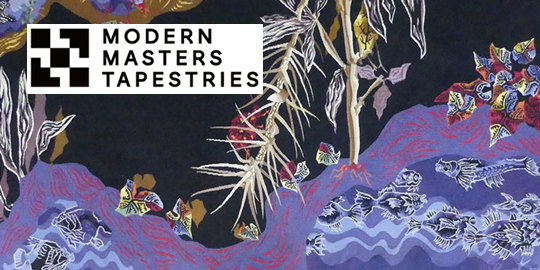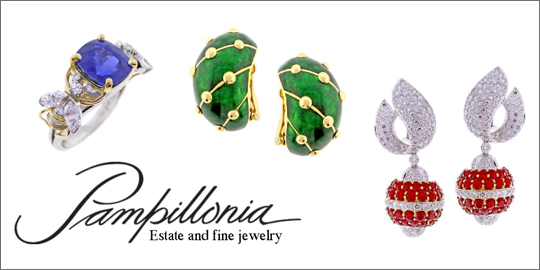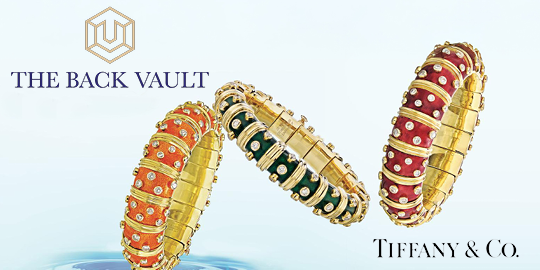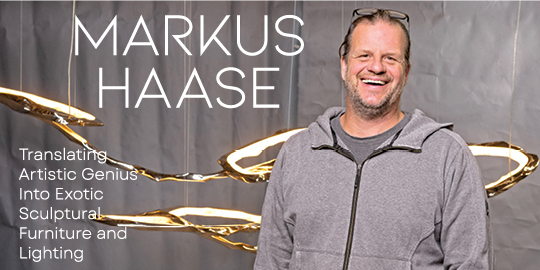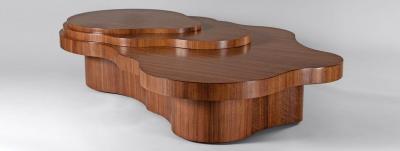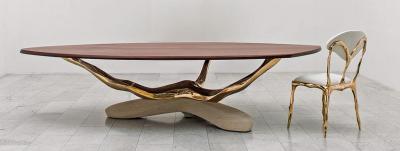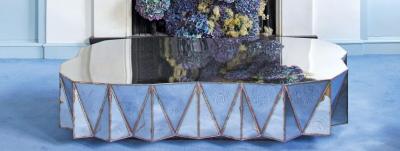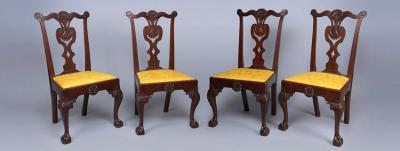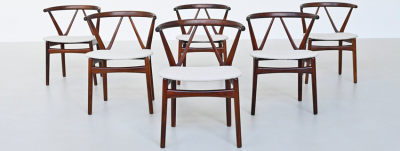Red Hill Gallery Brings Australian Art to The World
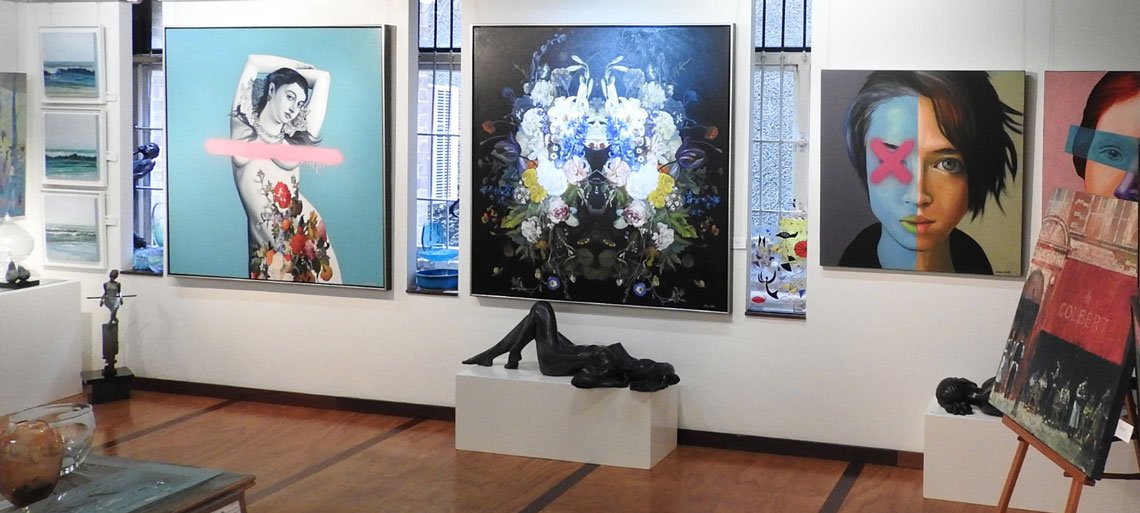 |
Works by Dean Reilly at Red Hill Gallery in Brisbane, Australia. |
Red Hill Gallery Brings Australian Art to The World
by Benjamin Genocchio
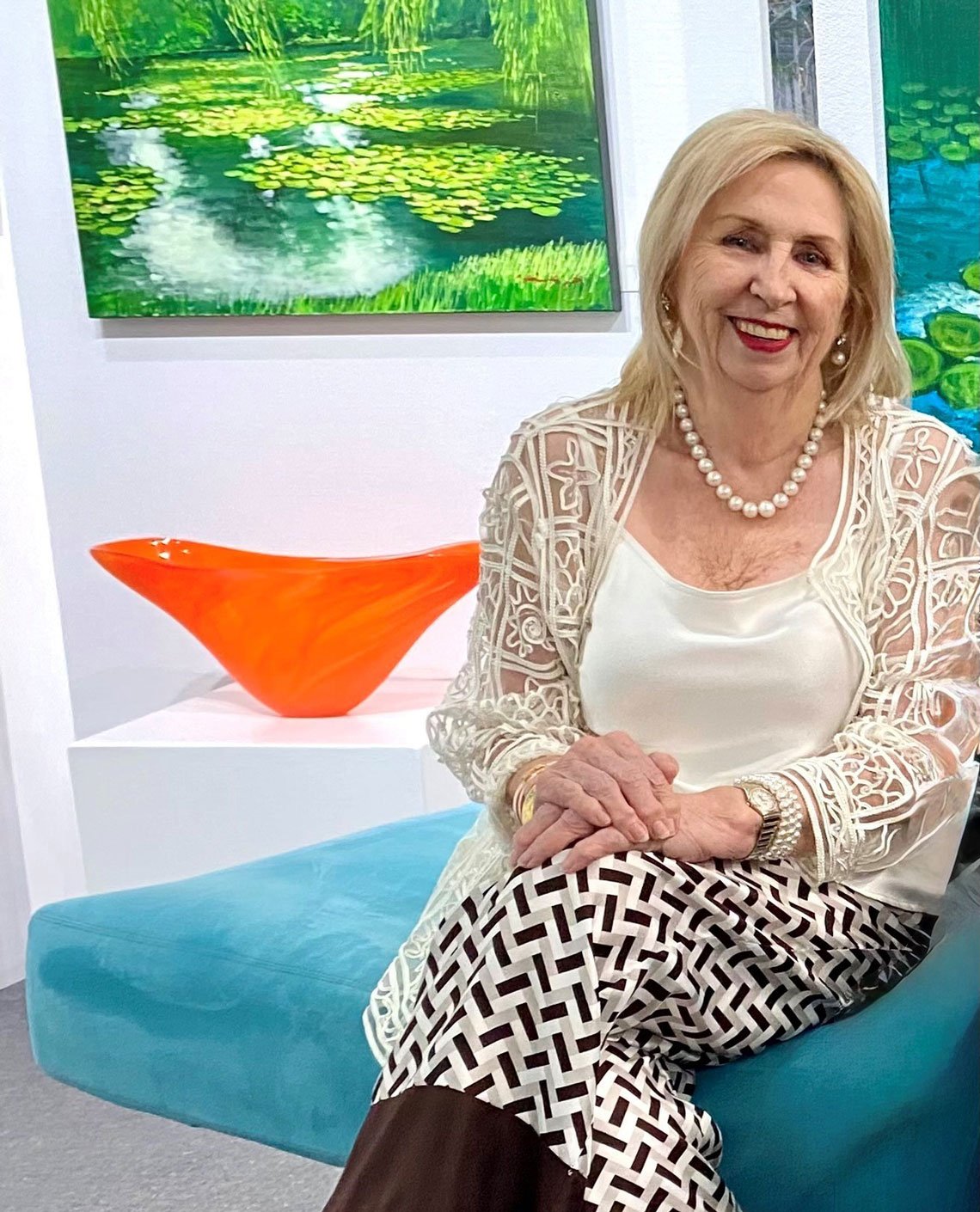 | |
Red Hill Gallery owner Margaret Campbell-Ryder |
In 1998, Margaret Campbell-Ryder of Brisbane, Australia sought a new chapter following a distinguished career in major events, marketing, and fashion. With her long-held passion for art, she embraced her husband's proposal to establish an art gallery. Fortuitously, the Red Hill Gallery in central Brisbane was available for purchase, and the couple seized the opportunity, acquiring both the business and its art collection. Now, 27 years later, Campbell-Ryder leads a significantly expanded gallery, representing and exhibiting the works of over 100 artists while serving a global clientele. She has played a pivotal role in curating art collections for Australian corporations but primarily collaborates with private clients, skillfully balancing their budgetary constraints with their artistic preferences and expectations. In a conversation with Incollect, she shared her deep passion for art and the enduring joy she finds in her work.
How and where did you first learn about art?
I credit my grandmother for sparking my love for art. I was born and raised in Bendigo, a historic town in country Victoria, renowned for its role in the gold rush of the early 19th century. The prosperity that followed led to the establishment of a remarkable regional public art gallery, featuring works by renowned European and Australian artists. My grandmother used to take me there on the weekend to look at the paintings and introduced me to art appreciation. You don’t realize until later in life how you are influenced by these special experiences and events in childhood.
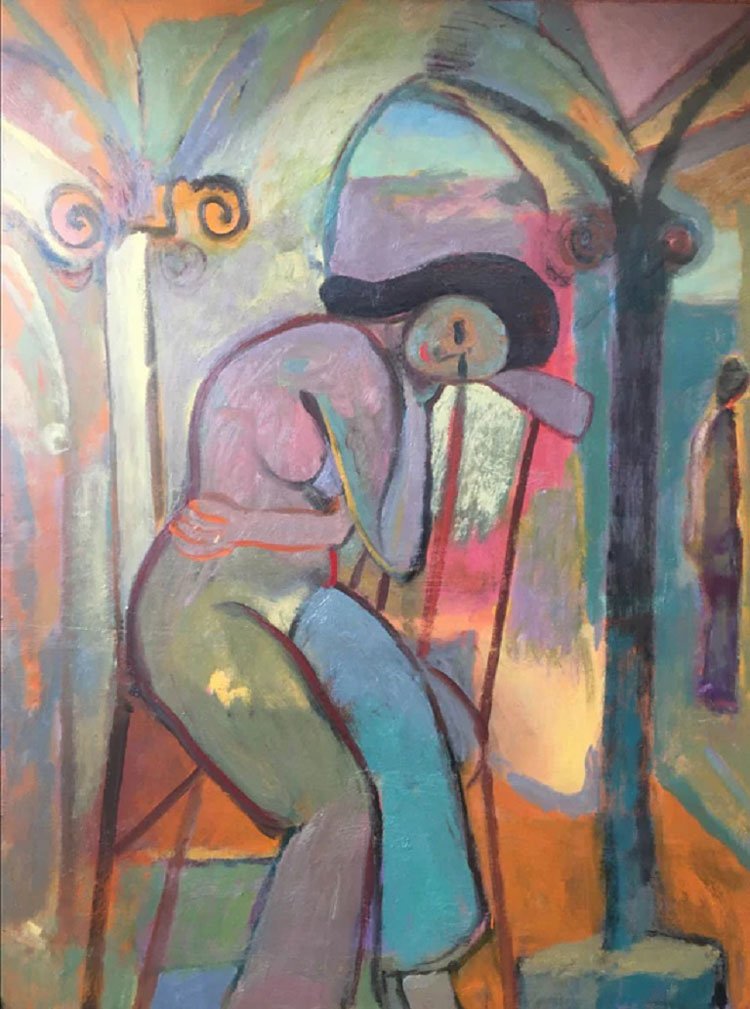 | 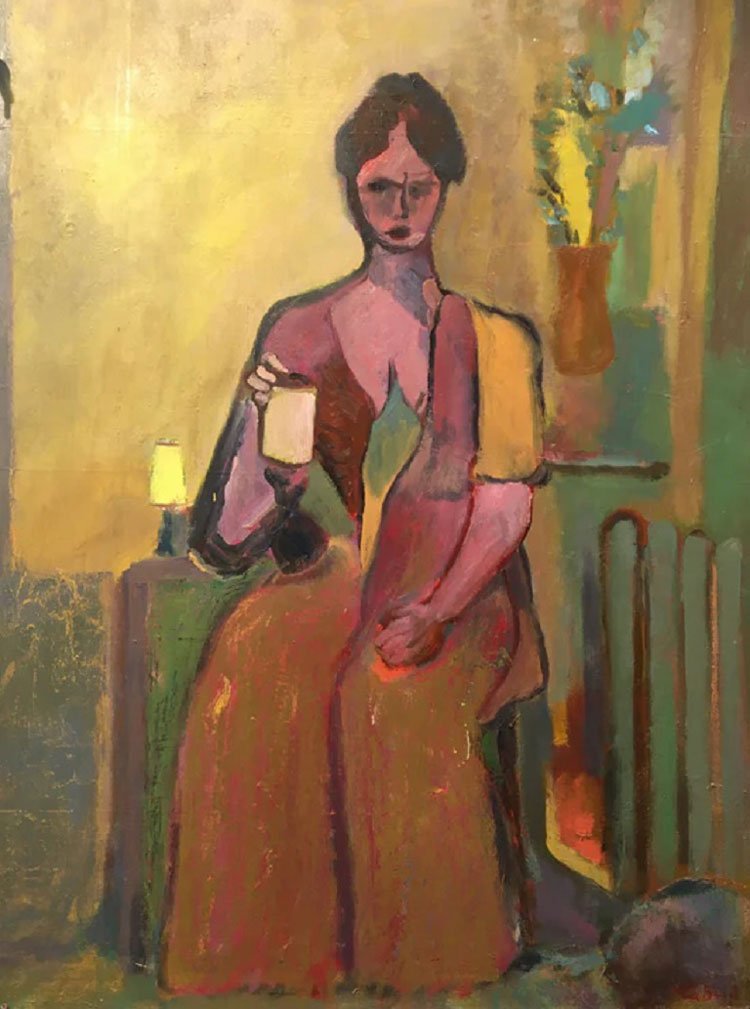 | |
Left: Jamie Boyd, Figure Resting on a Chair, oil on board Right: Jamie Boyd, Woman Holding a Cup, oil on board | ||
Tell us about the history of the gallery and its location?
The Red Hill Gallery first opened its door for business in 1986 and has remained at the same historic premises at 61 Musgrave Road, Brisbane. A quaint little red building with a green awning, the building is over a century old. It was built in the early 1900s by the Whitehouse family to house a business that supplied organs to city halls, civic buildings, churches and cathedrals throughout Australia and New Zealand. This connection links us to the cultural history of Brisbane, while our 40-plus-year exhibition history makes us one of the city’s oldest running art galleries.
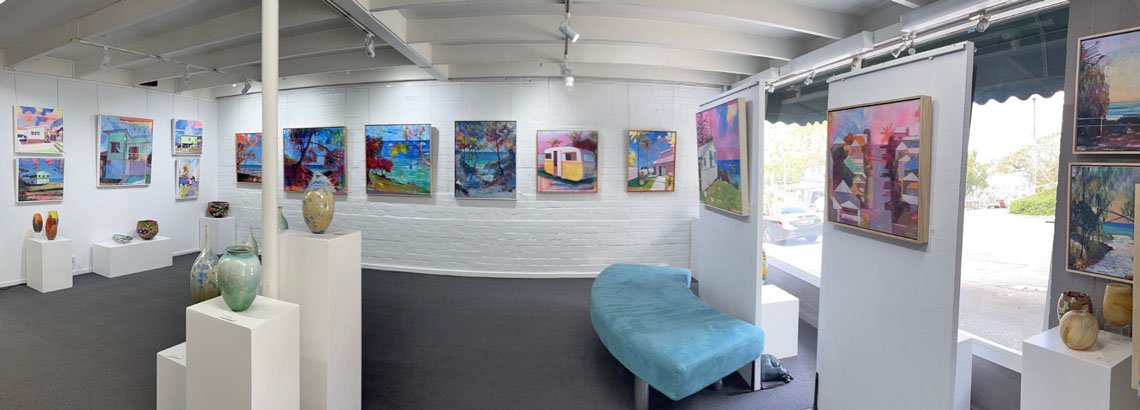 |
Works by Nick Olsen on display in the gallery. |
What kind of artists do you show?
Our gallery showcases a diverse array of artwork, encompassing landscapes, portraiture, and abstract painting, with all mediums and styles embraced. While we welcome a broad spectrum of artistic expression, our primary focus is on mid- and senior-career artists, complemented by a dynamic selection of promising emerging talents at the early stages of their careers. This balanced approach ensures a compelling and varied exhibition program.
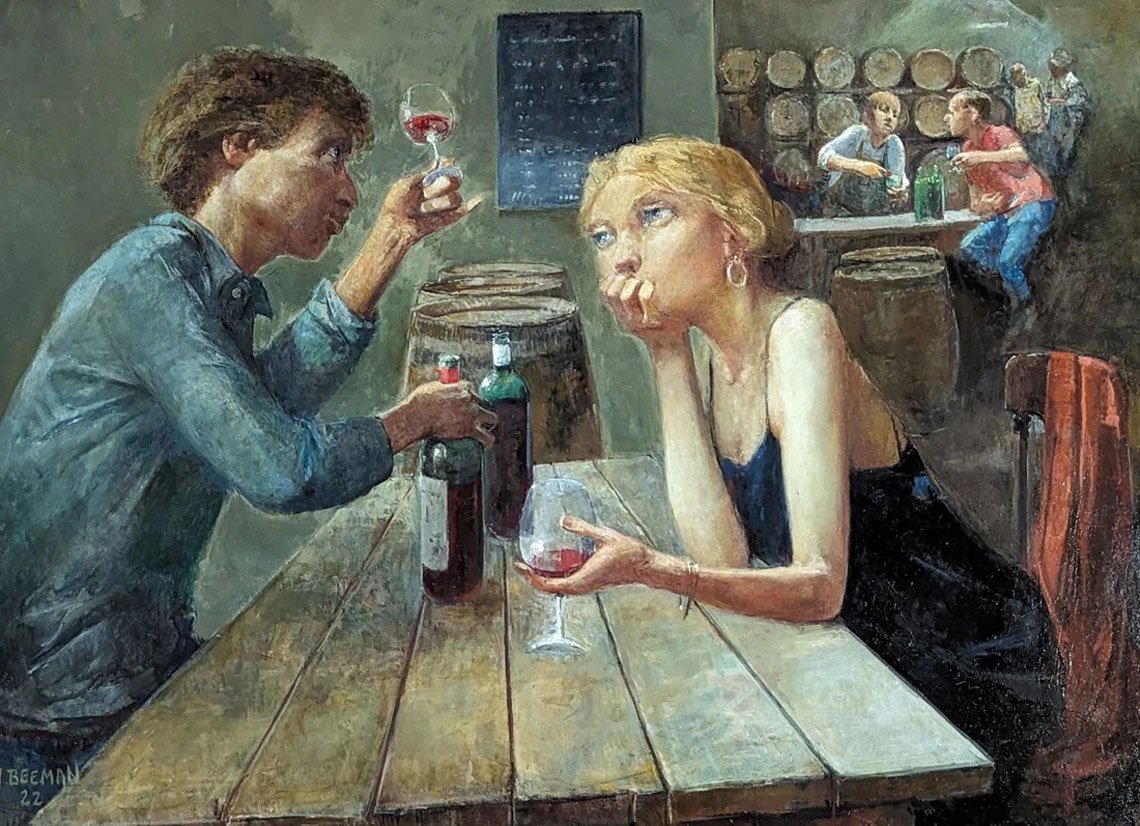 |
John Beeman, Wine Selection, oil on gesso |
How often do you do exhibitions?
We are committed to monthly exhibitions showcasing everything, including realist, impressionist, abstract and contemporary artworks. We also exhibit limited edition works on paper, bronze sculptures, glass, ceramics and all sorts of hidden treasures — the gallery is a reflection of my personality and taste and I love everything that I exhibit. I am a collector in an art dealer's body but luckily I am able to sell works of art in order to feed my voracious appetite!
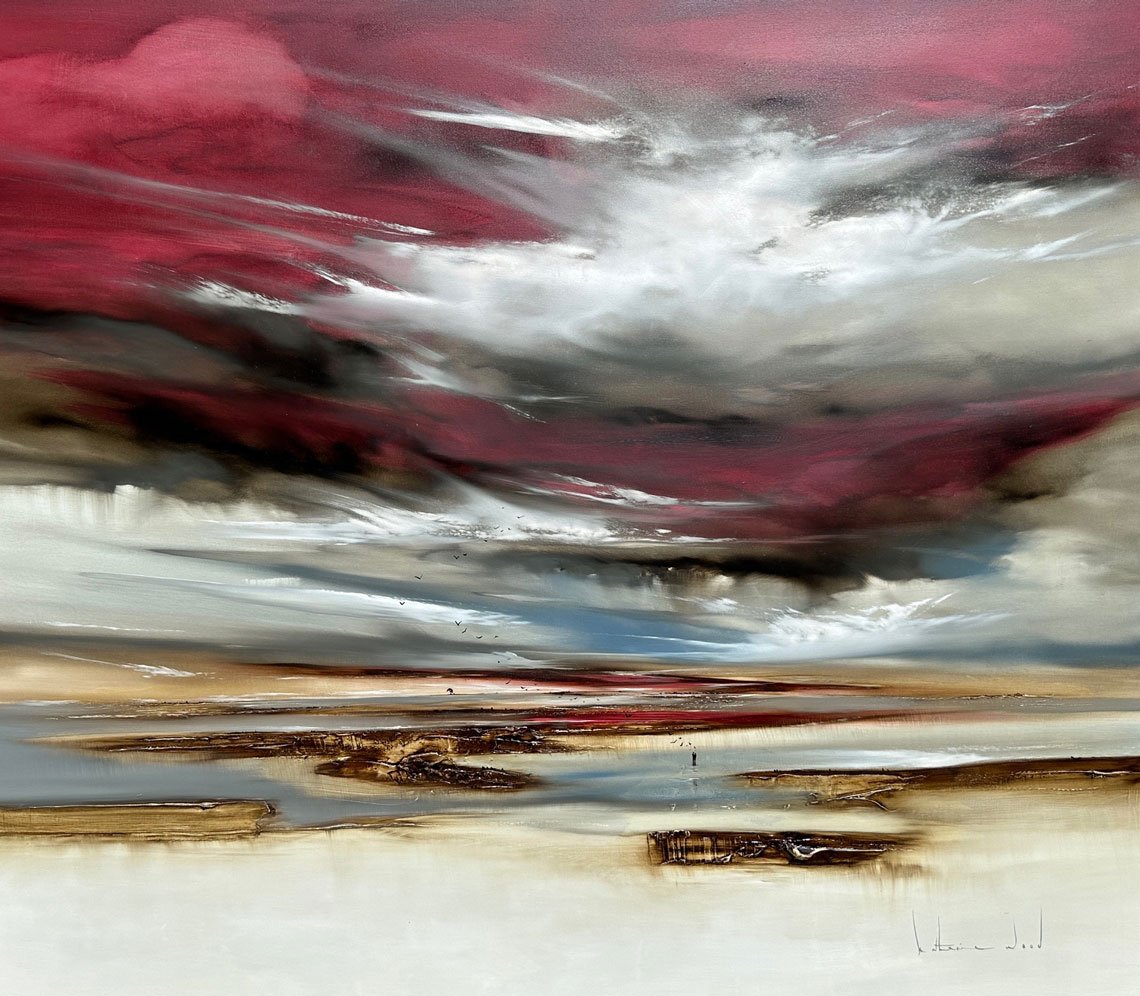 |
Katherine Wood, Reset For A New Beginning, mixed media. |
Which artists are you especially excited about right now?
I am particularly excited about the emergence of talented young artists who are gaining recognition and resonating with a new generation of collectors in the art market. The work of Katherine Wood is truly exceptional. Her paintings evoke a strong seascape aesthetic, yet it is the intricate details she incorporates that make her pieces particularly compelling. Her depiction of clouds, for instance, is remarkable. Working with oils and impasto on a grand scale, her technique and artistic vision are impressive. Originally from South Africa, she now resides in Australia, where her work continues to gain new audiences.
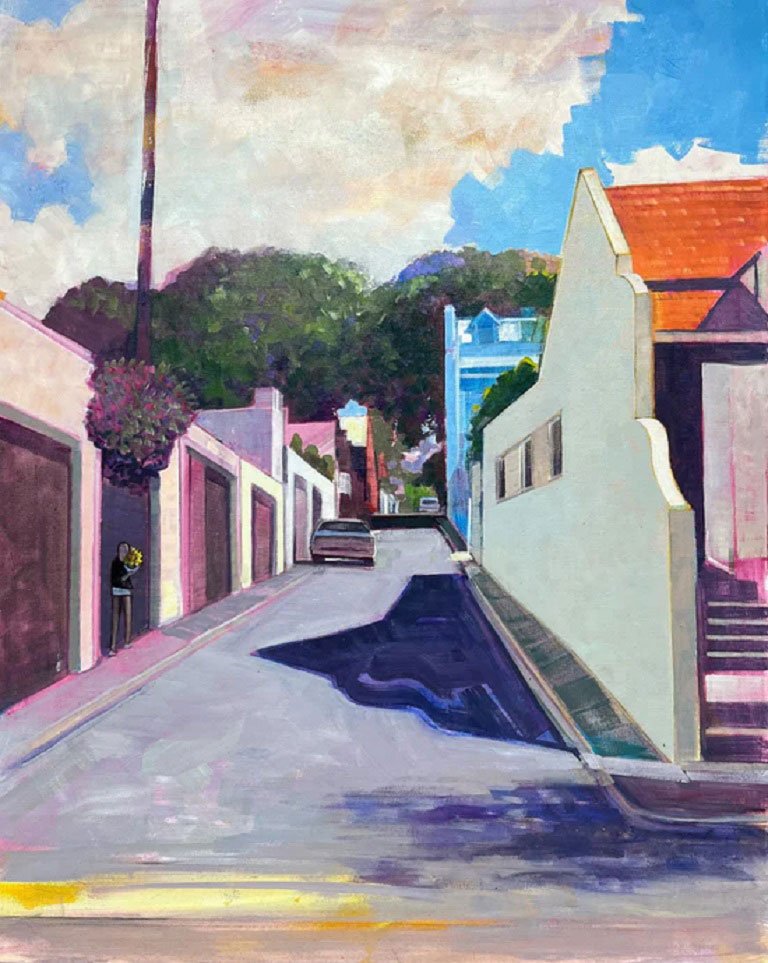 | 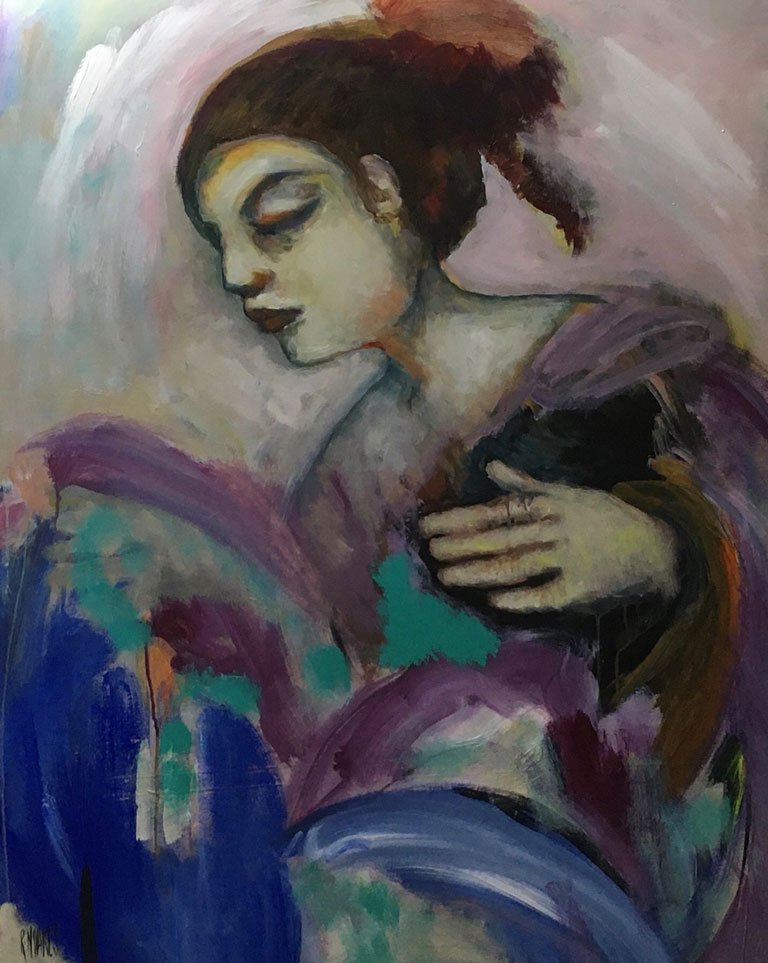 | |
Left: Nick Olsen, Paddington Flowers, oil on canvas. Right: Regina Noakes, The Silk Robe, acrylic. | ||
Another artist whose works I admire is Nick Olsen. He specializes in colourful compositions capturing landscapes, coastal scenes, and historic architecture. His use of soft, natural hues beautifully reflects the essence of the environment, making his work both visually striking and deeply captivating. Regina Noakes is well known both in Australia and internationally; her work adorns the walls of the homes of many famous people. She has had sellout exhibitions throughout Europe as well as in Australia.
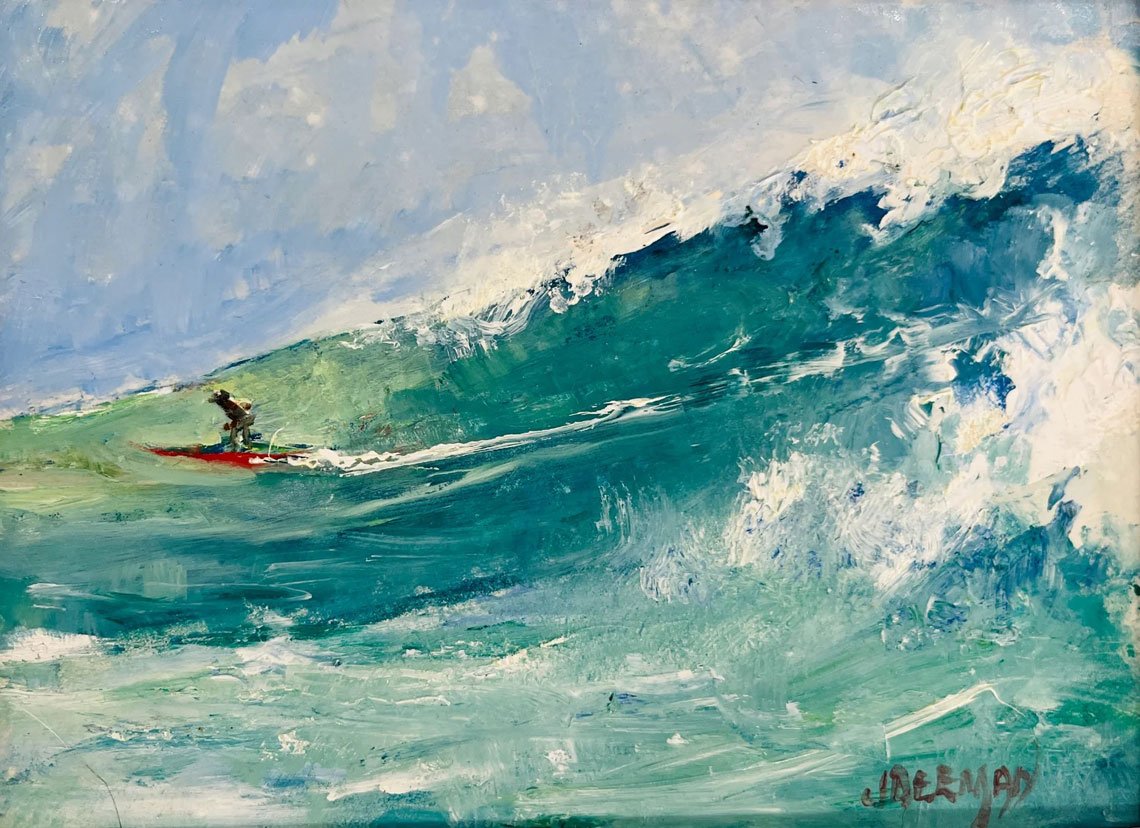 |
John Beeman, Surfing 14, oil on gesso |
Who are your best-selling artists?
Katherine Wood is currently among our best-selling artists, though given the volume of artwork we handle, sales trends can fluctuate from month to month. Another highly sought-after artist is John Beeman, who, at 99 years old, has been a mainstay of our gallery since I joined. His work is rarely available on the secondary market as clients often don’t part with his paintings. Some of his paintings sell for $25,000 — $30,000 each and there is usually a waiting list. Beeman paints scenes of people in intimate circumstances — a figure with a glass of wine, or a girl standing alone. They are at times mysterious but also intimate and tender. Demand for his work is so high that we have had to restrict gallery access during his exhibitions to manage crowds.
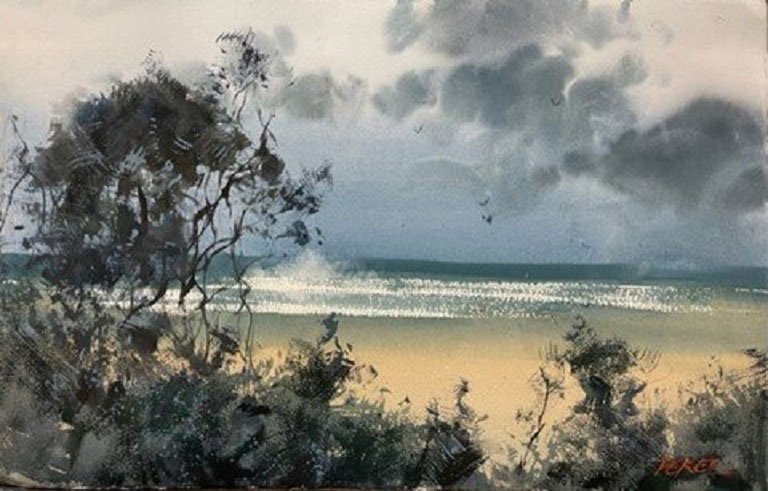 |
Herman Pekel, Kirra Beach, watercolor |
Watercolor artists Joseph Zbukvic and Herman Pekel also remain incredibly popular with both Australian and international collectors, and I am currently anticipating new pieces from both. Additionally, I am privileged to showcase the work of the famous Boyd family in Queensland and have showcased works from five generations of this distinguished artistic lineage. Jamie Boyd is the son of Arthur Boyd, one of Australia’s most renowned painters.
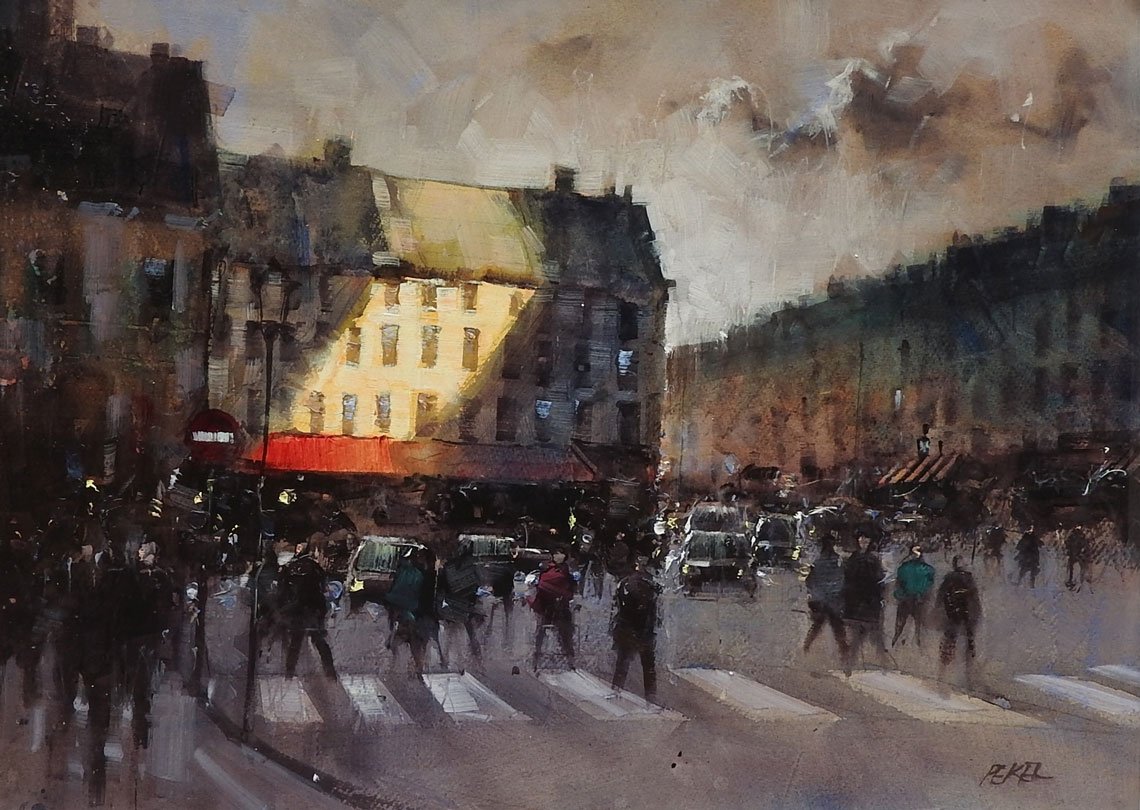 |
Herman Pekel, Light Shaft Montmartre, oil |
Your gallery has survived and thrived in a competitive business. What is the key to success as an art dealer and consultant?
Success in the art world requires more than simply displaying artwork and opening the doors to visitors. Art is a valuable product that must be marketed effectively, with promotion playing a crucial role in driving sales. I am constantly identifying new artists, curating compelling works, and seeking out potential buyers. Clients don't just come to you, you have to go out and find them. Since launching a marketing campaign for the gallery in December, we have more than doubled our network, welcoming new clients into the space every few weeks. Running a gallery is as much about client acquisition and retention as it is about curating exceptional art. As an art dealer, marketing is the foremost priority, while selling the artwork remains the core objective. To further expand into commercial sales, I am organizing a major event with leading architects across Queensland, creating new opportunities to showcase and place artwork in professional and corporate spaces.
Do you have a sales strategy or technique?
Authenticity and sincerity are essential — you must genuinely believe in what you say and do. Upholding strong ethical principles is paramount, as integrity and reputation are your most valuable assets.
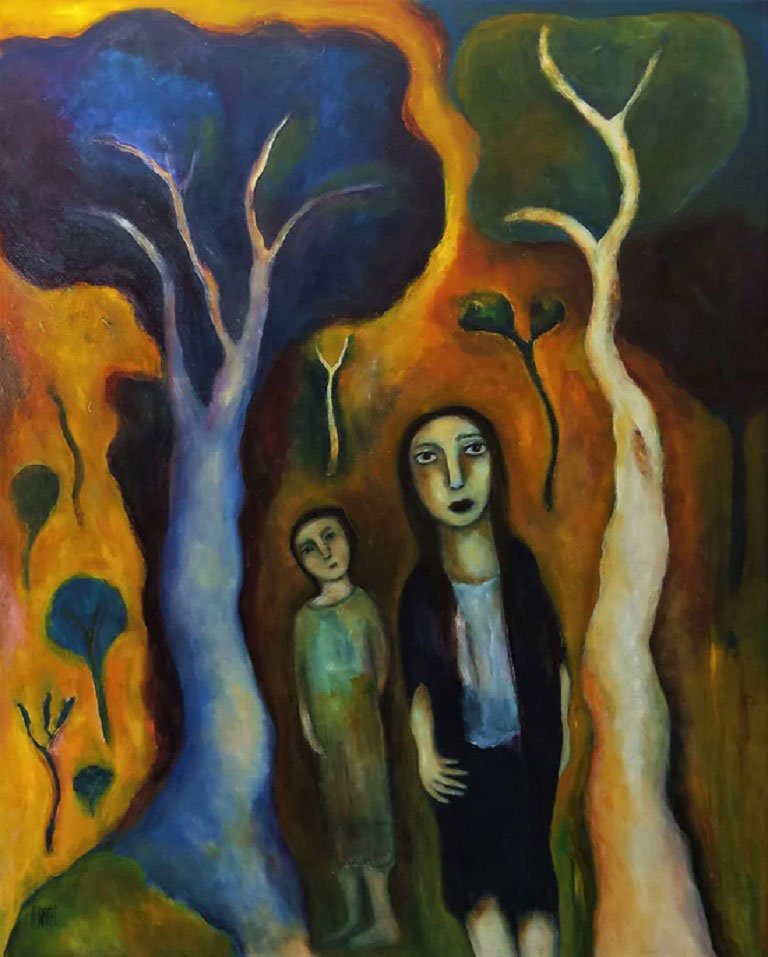 | 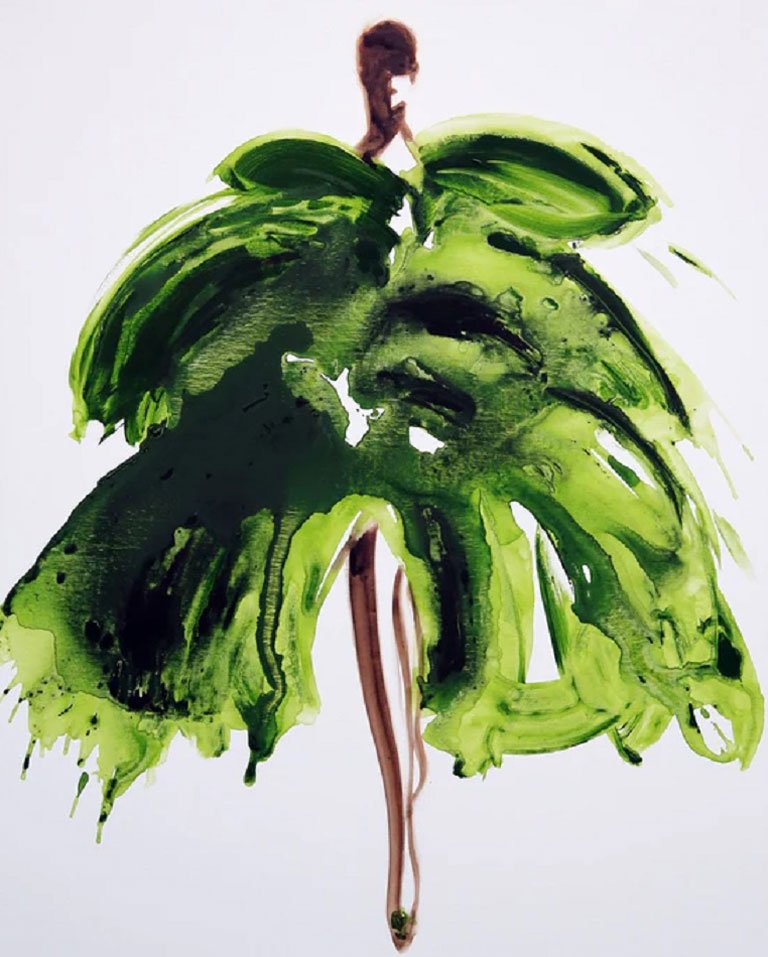 | |
Left: Regina Noakes, Same Way Home, acrylic and oil on canvas Right: Michel Canetti, Vivien, acrylic on canvas | ||
Do you continue to work with any corporate collections?
Yes, I do, though it is quite challenging in Australia, particularly in Queensland, where there are currently few active corporate art collections. Artbank in Brisbane serves as a key resource for corporations seeking to lease artwork for their spaces; however, art rentals have not proven to be a sustainable or profitable model for us, so we are no longer actively involved with them. I’ve found that Australia's art market remains relatively small, with a limited secondary market that primarily supports only a select few prominent artists.
Who are your clientele?
Our primary clientele in Brisbane are working professionals who have a deep appreciation for art and actively invest in building their collections. Over the years, our client base has expanded beyond Queensland to include collectors in Sydney, Melbourne, and, to a lesser extent, Perth. With the continued growth of our online marketing efforts, we are increasingly attracting international clients from Canada, the United States, and Europe, a trend we aim to further develop. However, Australia remains a relatively small player in the global art market, and its geographical distance presents significant challenges for Australian artists seeking international recognition.
 |
Sarah Larsen, Traces of Place 1, synthetic polymer on canvas |
How important is the internet to you in reaching new clients?
Having a digital presence is essential. Our gallery was among the first in Brisbane to establish a website and a Facebook page, embracing online engagement early on. Recently, we integrated an innovative platform that enables clients to virtually place paintings from our website onto their walls to visualize how they will look — a feature that has proven highly popular. Social media also plays a significant role, with Instagram being a key tool for showcasing artwork, while platforms such as Incollect and others help us expand our reach. Additionally, LinkedIn has become an important avenue for connecting with new audiences and fostering professional relationships within the art and business community.
What are your thoughts on art as an investment?
People frequently ask me, "Is this painting a good investment?" My answer is always the same — there's no definitive way to predict its future value. The reality is that no one has a crystal ball when it comes to the art market. While art can certainly be a long-term investment, I firmly believe that the most important reason to acquire a piece is a genuine appreciation for it. If you don’t love the work, its financial potential alone shouldn’t be the deciding factor.
Those interested in art as an investment often focus on high value works with a proven secondary market record or emerging artists with significant potential. This type of acquisition falls into a distinct category of collecting, where foresight and market awareness are crucial. New talent and opportunity continually emerge, and my role is to identify and engage with these promising artists. However, the future of any given artist is unpredictable — despite decades of experience in the industry, even I have seen artists I believed had immense potential struggle to gain traction, while others have unexpectedly risen to market prominence.
What is the most rewarding thing about working with artists?
I love working with artists. I enjoy their creativity, how they approach things and the unique way they see the world. It is intellectually stimulating and rewarding to work with artists, and it makes me try harder to share their vision and gifts. Working with artists is also my life, it’s what I do every day and it’s so much fun. Being around artists and learning from them is an enriching experience. Seeing clients engage with their work and having the opportunity to explain the artistic process behind each piece is incredibly rewarding. I firmly believe that art should be acquired out of love, as it adds meaning and depth to one’s life.
 |


